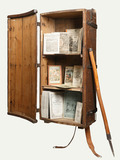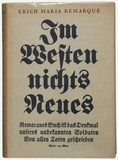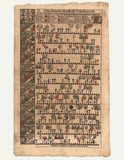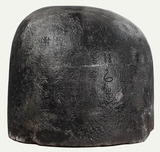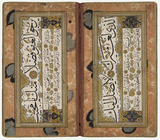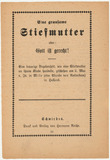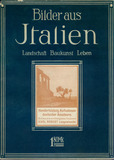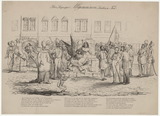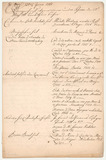“Eninger Krätze” portable bookcase from the 18th century
The mobile bookshop of the pre-industrial age“Krätze” is a Southern German term for a lockable, wooden storage case. Colporteurs (book peddlers) carried these on their backs, so as to transport epinal prints, religious tracts, calendars, entertainment magazines and other printed writings around the country.
All Quiet on the Western Front
A pacifist bestseller about the First World War, 1928The first parts of the text of Erich Maria Remarque’s novel All Quiet on the Western Front were published in the Vossische Zeitung in 1928. The publishing house started a major marketing campaign, which proved to be hugely successful. when it was published as a book at the start of 1929, it had already been ordered 30,000 times.
An Augsburg symbol calendar
Easy orientation throughout the course of the year, 1587Pictures, drawings and symbols can explain or even replace written texts for poor readers or the illiterate. Long before children learn to read for comprehension, they can read situations, pictures and pictograms.
Ancient Chinese inscribed stone
Stone copy of the first Wu-Chu stone drum, pre-1914These ten granite stones, weighing approximately 400 kilograms each, are referred to as “stone drums” due to the similarity to Chinese-style percussion instruments. They carry the oldest known Chinese stone inscriptions and are today housed in Beijing’s Palace Museum. These poetic texts, which describe hunting and fishing practices, are probably around 2,800 years old.
Arabic book of sayings
The written word as adornmentThis 18th century, handwritten book of Arabic sayings is a work of highly artistic calligraphy. Gold-framed tablets have been placed on marbled paper (Turkish: “ebru”) and bound into a codex.
Bänkel booklet for a few pfennig
A Cruel Stepmother or God is Just, undatedThe sale of small Bänkel and Moritat booklets was the ultimate goal of a Bänkel performance – it was the singer's livelihood. The booklets, which sold for approx. 10 pfennigs, contained the detailed narratives, the song lyrics, and rarely a pictorial representation.
Blue books
A pioneering success by publishing house Karl Robert Langewiesche, from 1909From the very beginning, the blue dust jacket was the visual identifier for the books issued by Dusseldorf publisher Karl Robert Langewiesche, established in 1902. The focus of the range was, in the words of founder Karl Robert Langewiesche (1874-1931), “quality mass-produced articles at low prices”, “so that my work may serve the broad masses, the very ones described as uneducated”.
Caricature of the ban on the newspaper Leipziger Allgemeine Zeitung
The long arm of Prussian censorship, circa 1843On Christmas Day of 1842, a letter published in the Leipziger Allgemeine Zeitung caused quite a stir among the readers. The letter, which was addressed to the Prussian King Friedrich Wilhelm IV, was written by Georg Herwegh, a young revolutionary poet (and important representative) of the Vormärz period in Germany.
Catalogus librorum prohibitorum
An index on the indexAs director of the Vienna-based Studien- und Büchercensur-Hofkommission – the Austrian Commission for Educational and Literary Censorship - Gerard van Swieten set about reorganising Austrian censorship which, up to that point, had been largely carried out by the Jesuits. He began an Austrian directory of banned books based on the Index librorum prohibitorum of the Roman Catholic Church, conceived as a resource for state authorities and booksellers.
Censorship list from 1760
Rousseau and Voltaire as dangerous goodsGerard van Swieten arrived in Vienna in 1745 as the personal physician of Empress Maria Theresia 1745. He set about making reforms to the Austrian health and university systems.
